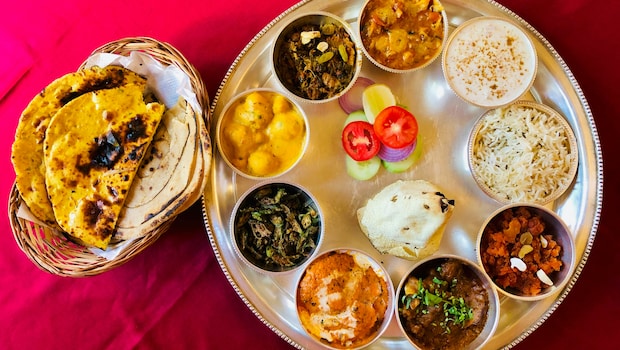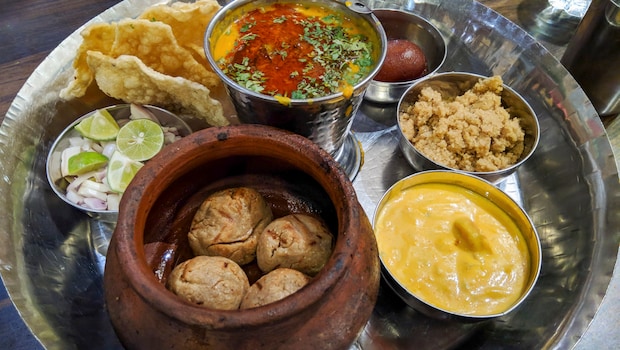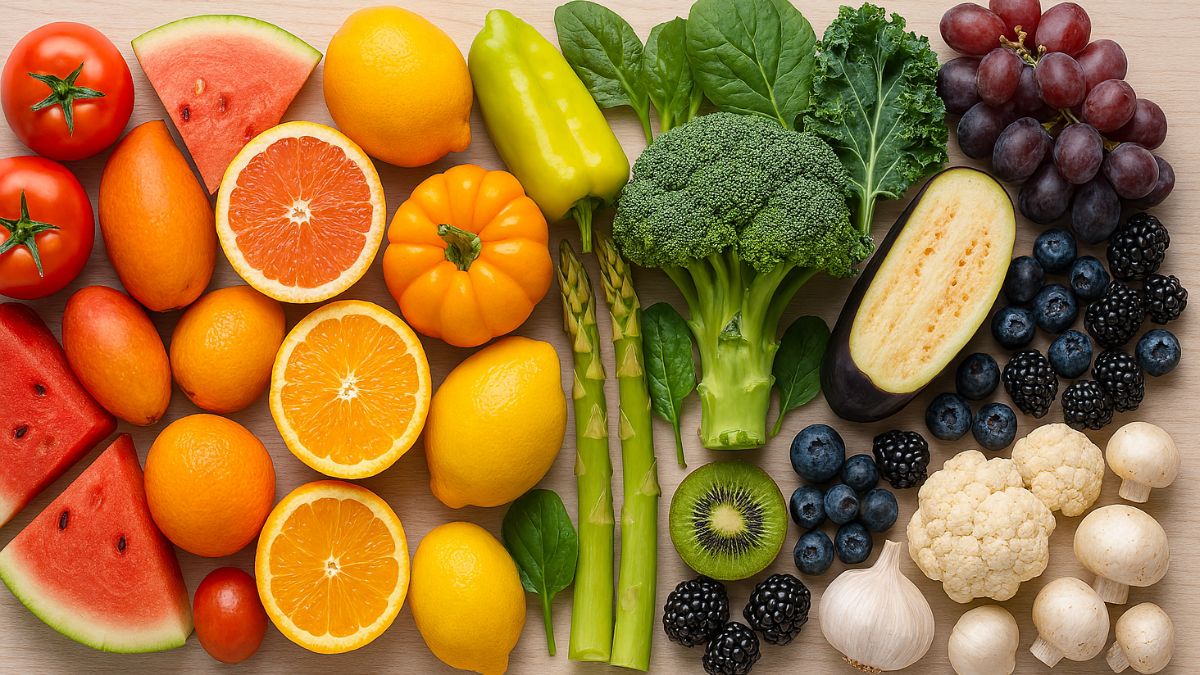National Nutrition Week in India is observed from 1-7 September every year. The day spotlights the need for balanced diets amid widespread nutritional challenges. In 2025, its theme-"Eat Right for a Better Life"-is more relevant than ever, especially when considering how traditional meals like the Indian thali map onto both modern dietary standards and local nutritional needs.
Also Read: How To Eat Indian Thali The Right Way? Celeb Nutritionist Pooja Makhija Explains
What A Typical Indian Thali Consists Of:
Studies confirm that a balanced Indian thali typically comprises whole grains (e.g., chapati or brown rice), lentils (dal), vegetables, dairy (such as buttermilk or curd), and condiments-forming a harmonious mix of macronutrients, micronutrients, fibre, and beneficial phytochemicals.

An Indian thali can be customised as per taste preference.
How Indian Thali Offers Adequate Nutrition For Good Health:
Supports gut health and reduces chronic disease risk
A detailed perspective published on the National Library Od Medicine states that this variety, especially a colourful array of plant-based foods-supplies fibre and diverse phytochemicals, which in turn foster healthy gut microbiota diversity, and may reduce risks of chronic diseases like type 2 diabetes and certain cancers
Delivers a good mix of macronutrients and micronutrients
Research from the Indian Migration Study assesses vegetarian diets and found that lacto-vegetarians often met adequate levels of protein, carbs, healthy fats and key micronutrients (iron, vitamin C, folate, and calcium)-often with fewer total calories compared to non-vegetarians.
Further, the thali's cultural diversity reflects ethnic, indigenous food wisdom. A review in Frontiers, including indigenous leafy greens, millets, and wild vegetables, revealed that many of these are especially rich in micronutrients such as iron, calcium, vitamin C, vitamin A, zinc, and folate, in amounts exceeding 20% of the Indian RDA per serving.
Offers balanced nutrition in one meal
Contrast this with broader Indian dietary consumption patterns: national-level analysis published on BMS shows that cereal-based calories dominate, while protein sources, fruits, and vegetables remain under-consumed across regions and income groups-especially among rural and poorer households
The traditional thali, however, provides a blueprint for combating these imbalances by naturally incorporating whole grains + pulses (complete proteins), diverse vegetables, dairy, and seasonings, aligning closely with dietary diversity recommendations.
Also Read: Gujarati Thali, Naga Thali And More: Make These 7 Traditional Thalis Easily At Home

Every region offers its special thali.
Photo: iStock
Madhuri Ruia, Nutrition Advisor, Fortune SuPoshan, AWL AGRI Business Ltd, tells NDTV, “The Indian thali is much more than a wholesome meal — it's a naturally gut-friendly way of eating. Packed with fibre-rich vegetables, lentils, and whole grains, it provides slow-release energy and keeps the digestive system active. The addition of probiotic-rich yoghurt or chaas, along with traditional fermented pickles, enhances gut health and supports the body's natural microbiome. A small drizzle of ghee not only aids digestion but also boosts nutrient absorption. All this comes together in a balanced thali that delivers satiety, nourishment, and well-being within just 500–600 calories — a perfect harmony of taste and health.”
Also Read: 13 Grand Indian Thalis You Need to Try At Least Once In Your Life
Hence, we can conclude that the Indian thali offers all the nutrition we need. To make it even better: Emphasise locally available indigenous ingredients, such as nutrient-dense millets and leafy vegetables. Encourage dietary variety-rotating different grains, legumes, veggies, and dairy forms.
This National Nutrition Week, celebrating the wholesome genius of the Indian thali makes both cultural and scientific sense. It offers a practical, delicious model for nourishing ourselves-and that truly is a meal worth celebrating.
About Neha GroverLove for reading roused her writing instincts. Neha is guilty of having a deep-set fixation with anything caffeinated. When she is not pouring out her nest of thoughts onto the screen, you can see her reading while sipping on coffee.






